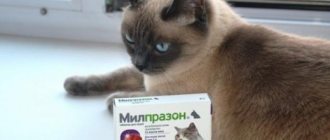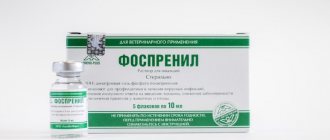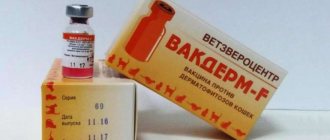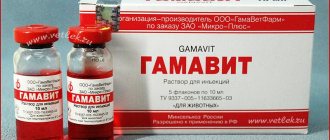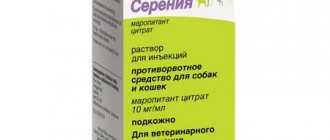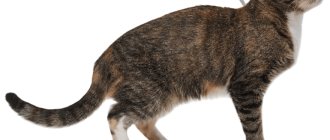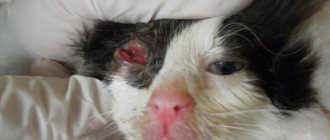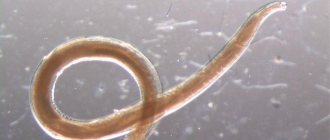Ringer's solution is a very popular veterinary drug that is used if necessary to correct the electrolyte balance of the cat's body. This medicine stops the intoxication and replenishes fluid levels.
Basically, Ringer's solution for cats is used for various conditions of shock, collapse, acute poisoning, peritonitis, ongoing intestinal infections, intestinal obstruction, burns and other painful conditions of the body, which are characterized by large loss of fluid.
Pharmacology
In accordance with the instructions, the drug is able to stop the course of intoxication, restore water and electrolyte balance in case of shock or heavy blood loss.
In addition, Ringer's solution is able to replenish the volume of blood circulating throughout the body.
However, due to the fact that the drug quite quickly enters the space outside the blood vessels, the effect of replenishing blood volume is extremely short-lived, lasting no more than forty minutes. Due to the fact that the blood volume increases and its composition becomes more diluted, the concentration of toxic and poisonous substances significantly decreases, which helps to stop intoxication.
Composition and mechanism of action of the drug
The Ringer-Locke solution is similar in content to blood plasma, therefore it is harmless and perfectly replenishes fluid loss. It has no irritating or toxic effect and can be administered to kittens. The transparent liquid is available in 200 or 400 ml bottles and 500 ml bags. The drug binds toxins, poisons, heavy metals, neutralizing their harmful effects on the cat’s body. Harmful substances come out with urine. The medicine stops the adhesion of formed blood cells, replenishes fluid reserves during dehydration, and restores water-salt balance. The Ringer-Locke solution contains the following substances:
- saline solution 0.9%;
- sodium bicarbonate;
- potassium chloride;
- glucose;
- pure water.
According to reviews from cat owners, timely and correct administration of Ringer-Locke liquid saved their pets from death.
Analogs
Level 4 ATC code matches: Disol
Sterofundin
Trisol
Ringer's solution
Gik, Glyukosol, Darrow, Glycosteril, Acesol, Yonosteril, Ringer's solution, Disol, Trisol, Chlosol, Saline solution.
Different breeds
Veterinarians prescribe the volume of solution depending on the weight and size of the dog, taking into account not the breed, but the type of disease and its course. The state of the animal itself at the time of providing therapeutic assistance plays a role in this.
In this regard, even the daily norm is a conditional indicator. For small breeds it is a maximum of 100 ml, for large dogs (Great Danes, St. Bernards, etc.), if dehydration is significant - from 300 to 400 ml. There are situations when a higher dose is required.
latest comments
Tatyana: Hello! You can order Goldline 15 mg 60 capsules (without a prescription?)
Anna M.: An excellent drug, worth the money. Thanks to him, I escaped with little blood.
Anastasia: Excellent drug.
Anastasia: The drug is good, the quality is even better than the price, it helps a lot, even if there are bad ones about it.
All materials presented on the site are for educational purposes only and are not intended for medical advice, diagnosis or treatment. The site administration, editors and authors of articles are not responsible for any consequences or losses that may arise when using site materials.
LLC "Medstorona - Medical Technologies" OGRN 1182375072802 All rights reserved 2011-2020
Instructions for use
In an emergency, subcutaneous administration of the drug is allowed.
If your pet exhibits symptoms of severe poisoning or dehydration, he will need an IV with Ringer-Locke solution. Intravenous drip administration for intoxication with poisons is preferably done in a hospital. If quick help is needed, before going to the clinic you need to inject the medication under the pet’s skin. The instructions for use note that a single dose is 40-50 ml, and a daily dose is 100-150 ml. The kitten's veins are small and compressed, so he is advised to inject the solution subcutaneously. The therapeutic dose is calculated individually based on the weight, age of the animal, and the complexity of the disease.
Limitations and Side Effects
The medication has a composition identical to blood plasma, so no unwanted symptoms are observed in cats after its use. Exceeding the dose causes overhydration or acidosis. In such cases, the administration of the drug is stopped or the dose is reduced. Ringer-Locke solution quickly increases the fluid content, so it is prohibited for pulmonary or cerebral edema. The medication is contraindicated if the kitten or adult pet has the following pathologies:
Kidney problems make it impossible to use the drug in a relatively sick animal.
- kidney dysfunction;
- difficulty passing urine or lack of urination;
- insufficiency of heart function;
- high blood acidity;
- hypovolemia.
How to replace Ringer-Locke solution?
The medicinal liquid can be replaced with analogues if necessary. There is a regular Ringer's solution for cats, but it does not contain glucose, which helps the liver cope with an abundance of toxins. Therefore, this medication is not so effective for poisoning. The following infusion solutions have a similar effect on the cat’s body:
- "Glycosteril";
- "Glyukosol";
- "Neohemodesis";
- "Trisol";
- Ringer's lactate.
If it is not possible to quickly get to the clinic at the first signs of poisoning in your pet, you need to inject yourself in the recommended dosage subcutaneously, but after this the animal should be urgently shown to a veterinarian.
special instructions
The medication does not replace saline; other medications cannot be diluted in it. The salts in the solution react with the components of the medications, changing their properties, which leads to unpredictable consequences for the health and life of the pet. Ringer-Locke solution can be used to wash wounds and mucous membranes of cats. Caution should be given to your pet if he is receiving estrogens or NSAID tablets. When a drug is prescribed in a course, it is necessary to change the injection sites to increase the effectiveness of the treatment.
Interaction
Caution should be used when combining the medicine with certain drugs, such as NSAIDs , estrogens or anabolic steroids .
When combined with cardiac glycosides, the load on the cardiovascular system increases.
Concomitant use with diuretics , angiotensin-converting enzyme or potassium supplements can lead to hyperkalemia .
When is medication needed?
The drug is advisable to use in the postoperative period.
Ringer-Locke solution is used in veterinary medicine to relieve symptoms of intoxication. In case of poisoning, adult cats or kittens experience weakness, loss of appetite, vomiting and diarrhea. In severe cases, the pet loses vision or bleeds. Indications for the use of Ringer-Locke liquid for cats:
- intoxication;
- dehydration after heavy blood loss;
- profuse diarrhea;
- bites of poisonous snakes and insects;
- inflammation of the pleura or peritoneum;
- electric shock;
- burns, frostbite;
- intestinal obstruction;
- period after operations.
Ringer's solution for cats with chronic renal failure
To reduce azotemia in the compensated stage of chronic renal failure, a laxative is used: Duphalac has a hyperosmotic, laxative effect, enhances intestinal motility, and promotes the excretion of ammonium ions. The dose of the drug is selected individually from 1 to 5 ml per animal 1-2 times a day.
Also, in the treatment of chronic renal failure, enterosorbents are used - they are able to adsorb ammonia and other toxic substances in the intestines. Enterodes is a drug that is most often used as a sorbent.
The drug is taken orally, 1-2 hours after eating or taking medications, diluted at the rate of 2.5 g of powder per 50 ml of cold boiled water. Prescribed at a rate of 0.3 g/kg body weight/day.
The drug is given to the animal 3 times a day.
https://youtube.com/watch?v=Oczk1WX5Ho0
Fluid therapy is indicated if the animal is severely dehydrated and levels of urea and creatinine will be elevated. IV drips will help provide immediate hydration. This is best achieved by placing an intravenous catheter and administering an isotonic, balanced fluid such as lactated Ringer's solution or saline.
During intravenous infusions, it is necessary to periodically check the patient's blood counts. In most cases, indicators begin to change for the better within the first day.
In the treatment of chronic renal failure, intravenous infusions are prescribed in a volume and in a course that corresponds to: the size of the animal, the degree of dehydration and the levels of urea and creatinine.
Subcutaneous infusion can be used continuously in the treatment of chronic renal failure and is aimed at eliminating dehydration.
Dehydration may develop because as the disease progresses, the cat may stop drinking or the animal may vomit frequently.
The amount of subcutaneously administered fluid may vary depending on the size of the animal, 125-150 ml is administered to large animals, and 75 ml per day may be sufficient for small animals.
If infusion therapy is ineffective in the treatment of chronic renal failure, peritoneal dialysis (link to acute renal failure) can be used, which can be carried out both in a clinic setting and on an outpatient basis.
A protein- and phosphate-restricted diet is used, which reduces the production of nitrogenous products. Both canned and dry foods are used, and canned diets provide an additional source of fluid. Frequent weighing of the animal and monitoring of the amount of feed consumed is necessary.
If the animal's appetite decreases, it is necessary to increase the amount of food eaten.
There are different methods: you can use different forms of food (alternating dry and wet food); feed should be heated; using only fresh food (uneaten canned food must be changed every 6-12 hours); Sometimes cats and dogs are more willing to eat food from the owner's hands in small portions. If the animal does not eat on its own, it is necessary to use tube feeding.
Chronic renal failure is an irreversible disease. With constant treatment and monitoring the development of the disease, the animal’s quality of life can be maintained at a high level, and the life expectancy of a sick animal can last from several months to several years.
Infusion therapy in the treatment of chronic renal failure
When treated for chronic renal failure, creatinine levels may drop to normal in some animals, persist for several months, and then rise again.
It is important for owners to understand the temporary nature of this phenomenon and not stop treatment for chronic renal failure.
When using ACE inhibitors, hyperkalemia may develop due to potassium retention. When benazepril and potassium are combined, the animal's serum potassium levels should be checked every 2 to 4 weeks. If hyperkalemia occurs, it is necessary to stop taking or reduce the dose of potassium.
To use sodium bicarbonate internally: add 17 teaspoons of baking soda per liter of water. The solution is stable for 3 months when stored in the refrigerator with the lid closed.
